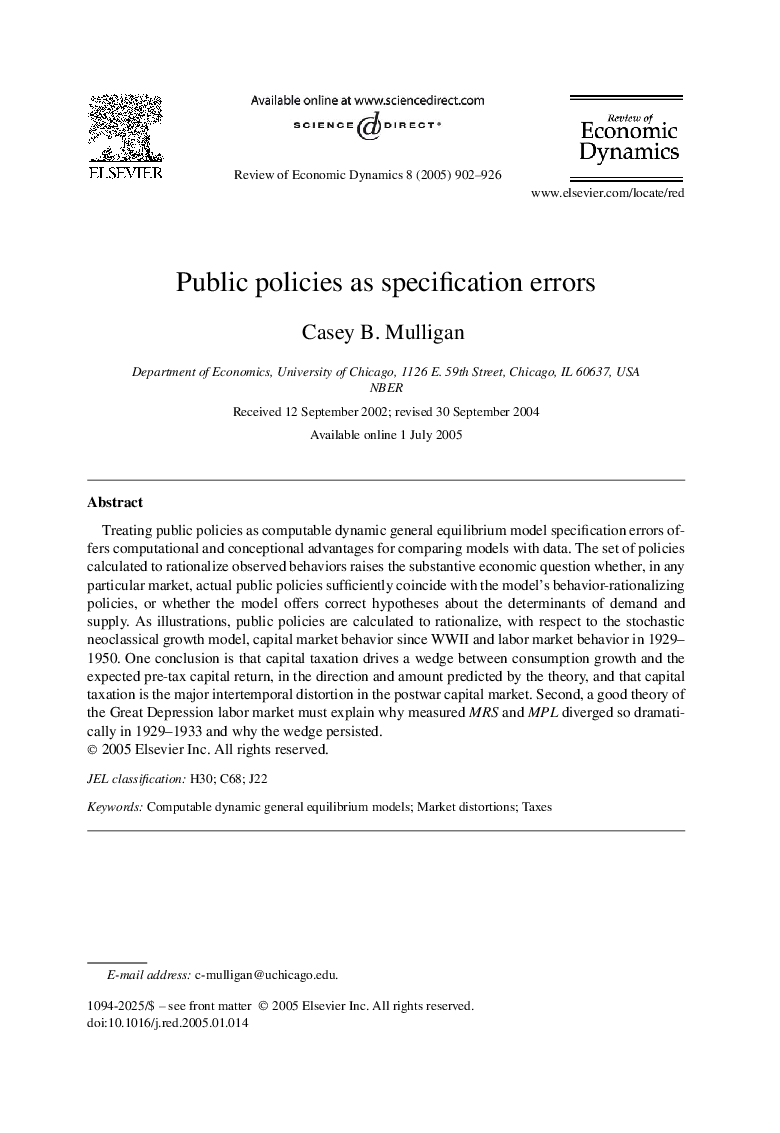| Article ID | Journal | Published Year | Pages | File Type |
|---|---|---|---|---|
| 9732005 | Review of Economic Dynamics | 2005 | 25 Pages |
Abstract
Treating public policies as computable dynamic general equilibrium model specification errors offers computational and conceptional advantages for comparing models with data. The set of policies calculated to rationalize observed behaviors raises the substantive economic question whether, in any particular market, actual public policies sufficiently coincide with the model's behavior-rationalizing policies, or whether the model offers correct hypotheses about the determinants of demand and supply. As illustrations, public policies are calculated to rationalize, with respect to the stochastic neoclassical growth model, capital market behavior since WWII and labor market behavior in 1929-1950. One conclusion is that capital taxation drives a wedge between consumption growth and the expected pre-tax capital return, in the direction and amount predicted by the theory, and that capital taxation is the major intertemporal distortion in the postwar capital market. Second, a good theory of the Great Depression labor market must explain why measured MRS and MPL diverged so dramatically in 1929-1933 and why the wedge persisted.
Keywords
Related Topics
Social Sciences and Humanities
Economics, Econometrics and Finance
Economics and Econometrics
Authors
Casey B. Mulligan,
